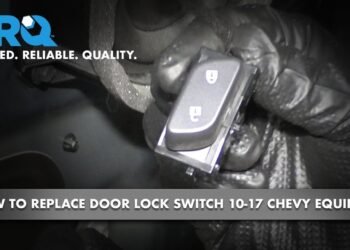A key that won’t turn to the lock position can be frustrating. You might feel stuck and unsure of what to do next.
Understanding why a key won’t turn can save you time and stress. This issue is common and can happen for various reasons. It might be a problem with the key, the lock, or even the way you are trying to turn it.
In this blog post, we’ll explore the possible causes and solutions. You will learn some simple steps to diagnose and fix the problem. By the end, you’ll know how to handle this annoying situation with ease. Stay tuned to get back on track with a smoothly turning key.
Credit: www.access-hardware.com
Common Causes
Experiencing issues with your key not turning to the lock position can be frustrating. Understanding the common causes can help you troubleshoot and resolve the problem efficiently. Below are some typical reasons behind this issue, including detailed insights on each.
Worn Out Key
A worn out key is one of the most common causes. Over time, keys can become damaged or worn. This wear and tear affects the key’s ability to align correctly with the lock mechanism.
- Check for visible signs of wear and tear.
- Compare the worn key with a spare key.
- Consider getting a new key cut.
Steering Wheel Lock
The steering wheel lock is another frequent culprit. If the steering wheel is locked, the key may not turn. This feature is a security measure, but it can sometimes engage unintentionally.
- Try gently turning the steering wheel left and right.
- While turning, attempt to turn the key to the lock position.
- This should release the steering wheel lock and allow the key to turn.
By understanding these common causes, you can address the issue with your key not turning to the lock position more effectively.

Credit: www.ebay.com
Check The Gear Position
Sometimes, your car key won’t turn to the lock position. This can be frustrating. One common reason is the gear position. Let’s break it down into two categories: Automatic Transmission and Manual Transmission.
Automatic Transmission
For cars with automatic transmission, the gear must be in Park (P) or Neutral (N) to turn the key to the lock position. If the gear is in Drive (D) or Reverse (R), the key won’t turn. This is a safety feature.
To check the gear position:
- Ensure the gear lever is in Park.
- Try to turn the key again.
- Wiggle the gear lever slightly to ensure it’s fully engaged.
If the key still won’t turn, there might be an issue with the gear lever or the shift lock mechanism.
Manual Transmission
For manual transmission cars, the key may not turn if the car is in gear. The key should turn easily when the car is in Neutral.
To check the gear position:
- Press the clutch pedal down.
- Move the gear lever to Neutral.
- Release the clutch and try turning the key again.
If the key still won’t turn, check if the gear lever is fully in Neutral. Sometimes, the gear lever might not engage properly.
By understanding the gear position, you can solve the problem of the key not turning. This simple step can save time and frustration.
Inspect The Ignition Switch
Inspecting the ignition switch can help when the key won’t turn to the lock position. Check for any debris or damage.
Having trouble with your key not turning to the lock position? The ignition switch might be the culprit. Taking a closer look at this component can reveal hidden issues. Let’s explore some common problems.Debris In Ignition
Sometimes, debris or dirt can clog the ignition. This buildup can prevent the key from turning. Using compressed air can help clear it out. Blowing into the ignition slot may dislodge small particles. A clean ignition means a smoother key turn.Damaged Ignition Cylinder
A damaged ignition cylinder can also cause issues. Wear and tear can deform the cylinder. This damage can stop the key from moving correctly. Replacing the ignition cylinder might be necessary. A new cylinder ensures proper key function. Inspecting your ignition switch is crucial. It can save you from bigger problems later. Keep your ignition clean and check for damage regularly. “`Lubricate The Lock
Sometimes, the key won’t turn to the lock position because the lock is dry. Lubricating the lock can solve this issue. A well-lubricated lock ensures smooth operation. It helps the key to move easily. Proper lubrication also prevents wear and tear.
Using Graphite Powder
Graphite powder is the best choice for lock lubrication. It does not attract dirt and dust. This keeps the lock clean and functional. To apply, insert the nozzle into the keyhole. Squeeze a small amount of powder into the lock. Then, insert the key and turn it several times. This distributes the graphite powder inside the lock. The lock should now work smoothly.
Avoiding Wd-40
WD-40 is a popular lubricant. But it is not suitable for locks. WD-40 can attract dirt and dust. This can cause the lock to jam over time. It is best to avoid using WD-40 in locks. Stick to graphite powder for a clean, smooth, and long-lasting solution.
Steering Wheel Movement
Having trouble with your key not turning to the lock position? The steering wheel might be the issue. The steering wheel can sometimes get stuck, causing the key to jam. Understanding this can save you time and frustration.
Jiggling The Steering Wheel
Try jiggling the steering wheel gently. Hold the wheel and turn it slightly left and right. Do this while trying to turn the key. This can often release the tension and allow the key to turn.
Realigning The Wheels
Check if the wheels are misaligned. Misaligned wheels can cause the steering wheel to lock. Straighten the wheels and try turning the key again. This simple step can often solve the issue.

Credit: herolocksmith.co.uk
Battery Check
If your key won’t turn to the lock position, the car battery might be the culprit. The battery is crucial for powering the ignition. A weak or dead battery can prevent the key from turning. Let’s explore the symptoms of a low battery and how to test it.
Low Battery Symptoms
Recognizing the signs of a low battery can save time and frustration. Here are some common symptoms:
- Dim headlights: If your headlights are dim or flickering, the battery may be weak.
- Slow engine crank: The engine cranks slowly when starting the car.
- Clicking sound: A clicking sound occurs when turning the ignition.
- Electrical issues: Power windows and other electronic components work intermittently.
- Check engine light: The check engine light might illuminate.
Testing The Battery
To confirm if the battery is the issue, perform a simple test:
- Turn off the car: Ensure the car is off and the keys are out of the ignition.
- Open the hood: Locate the battery under the hood.
- Check for corrosion: Inspect the battery terminals for corrosion. Clean if necessary.
- Use a multimeter: Set a multimeter to DC voltage and connect it to the battery terminals.
- Read the voltage: A healthy battery should read between 12.4 and 12.7 volts.
- Below 12.4 volts: If the reading is below 12.4 volts, the battery might need charging or replacement.
Maintaining a healthy battery ensures smooth operation. Regular checks can prevent many issues.
Key Inspection
Experiencing issues with your car key? A key that won’t turn to the lock position can be frustrating. The first step in solving this problem is a thorough key inspection. This involves checking for obvious issues with the key itself. Two common problems are a bent or damaged key and using a spare key can help identify the issue.
Bent Or Damaged Key
A bent or damaged key can prevent your car key from turning. Inspect your key for any visible signs of damage. Look for bends, cracks, or worn-out teeth. These can all impact the key’s ability to function properly.
If your key is bent, you might be able to straighten it using gentle pressure. Be careful, as too much force can break the key. If the key is cracked or has worn-out teeth, it may need to be replaced entirely. A damaged key can also harm the lock cylinder, leading to more issues.
| Issue | Possible Solution |
|---|---|
| Bent Key | Straighten gently or replace |
| Cracked Key | Replace key |
| Worn-out Teeth | Replace key |
Using A Spare Key
If you have a spare key, use it to test the lock. A spare key can help determine if the issue is with the key or the lock itself. If the spare key turns without issue, your primary key may be the problem. Check the spare key for signs of wear as well. Even if it works, it might not last long if it is also worn.
If the spare key does not work, the issue may lie within the lock cylinder. You might need professional help to fix it. Always keep your keys in good condition to avoid these problems.
Consult A Professional
When your key won’t turn to the lock position, it can be frustrating. Sometimes, the issue may be beyond basic troubleshooting. This is when it is important to consult a professional. A locksmith can diagnose and fix complex lock problems. They have the skills to handle situations that are not easily resolved.
When To Seek Help
When the key is stuck and won’t budge, it’s time to seek help. If the lock mechanism feels loose or jammed, a professional’s touch is needed. Strange noises from the lock are another sign. Don’t force the key, as it can cause more damage.
Choosing A Locksmith
Choose a locksmith with good reviews and a solid reputation. Check for certifications to ensure they are qualified. Ask for a quote before they start the work. This helps avoid unexpected charges. Trust a locksmith who explains the problem clearly. A professional will offer solutions and advise you on future maintenance.
Frequently Asked Questions
Why Won’t My Key Turn In The Lock?
The key might be worn out. Also, the lock could be dirty or damaged.
How Do I Fix A Key That Won’t Turn?
Try lubricating the lock with graphite powder. If that fails, consult a locksmith.
Can A Locksmith Fix A Key That Won’t Turn?
Yes, locksmiths can repair or replace damaged locks and keys.
Is It Safe To Force A Key To Turn?
No, forcing the key can break it or damage the lock.
What Causes A Car Key Not To Turn?
The ignition might be locked. Or, the key could be worn or damaged.
Conclusion
Struggling with a key that won’t turn? Don’t worry, you’re not alone. This issue can be frustrating, but solutions exist. First, check your key and lock for damage. Sometimes, a little cleaning can help. Lubricate the lock with graphite powder.
Avoid using oil; it attracts dirt. If problems persist, consult a locksmith. Regular maintenance prevents future issues. Keep your keys and locks in good condition. This ensures smooth operation and peace of mind. Remember, a well-maintained lock saves time and stress.
Stay proactive with your lock care. You’ll avoid many common issues.
















